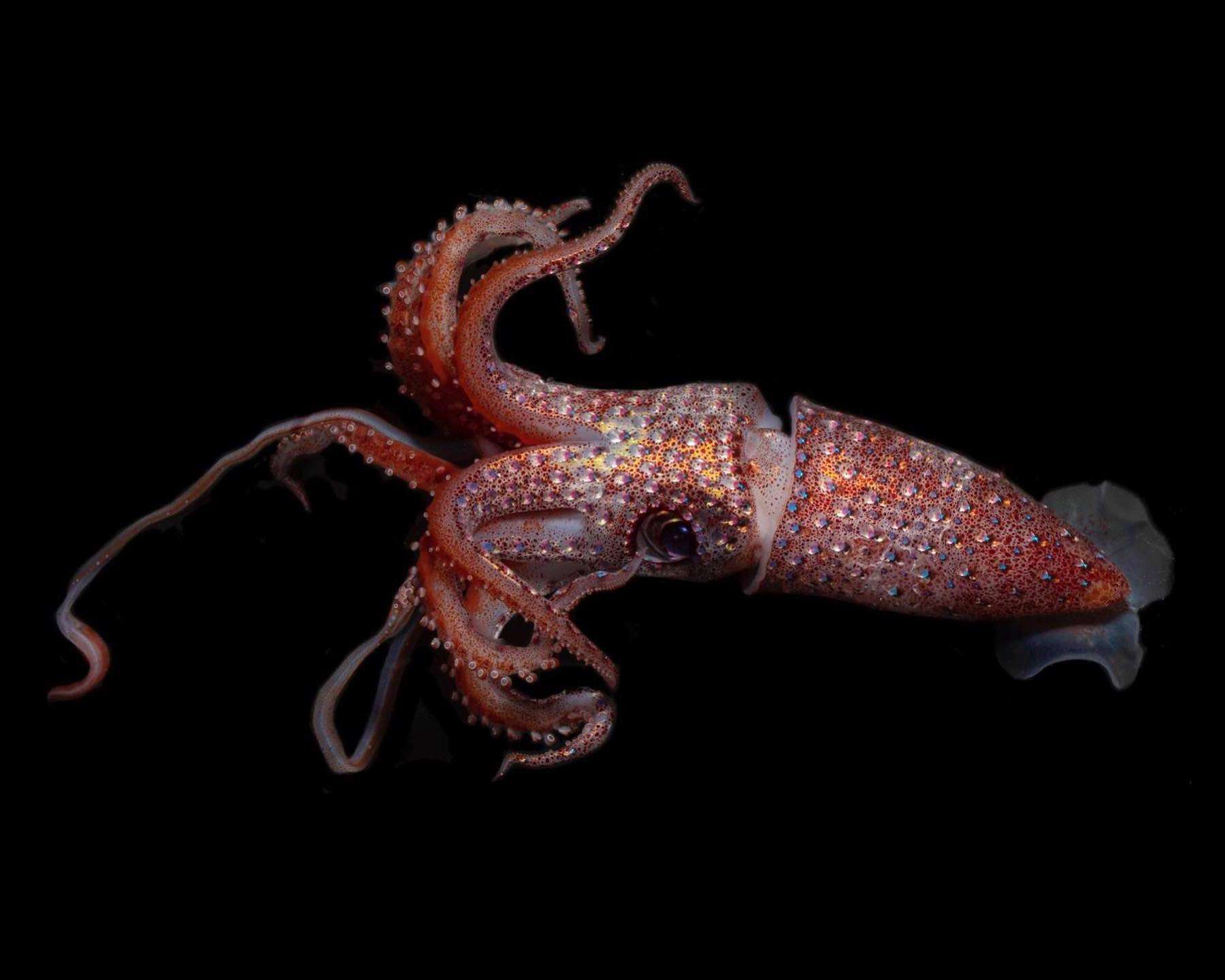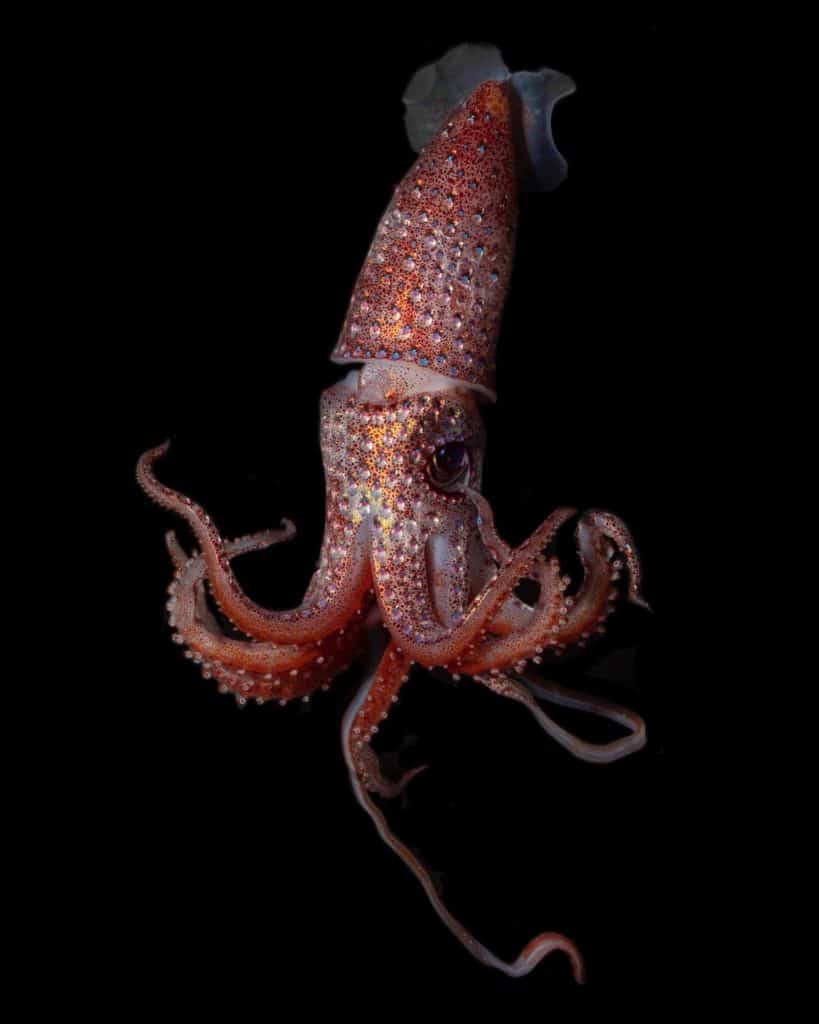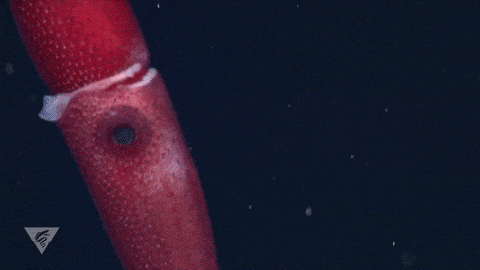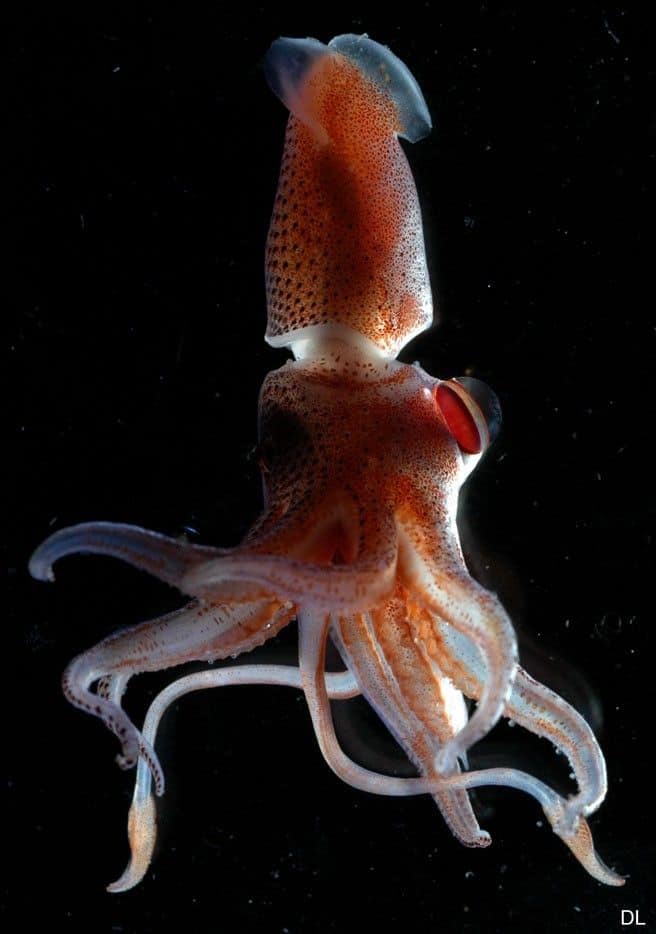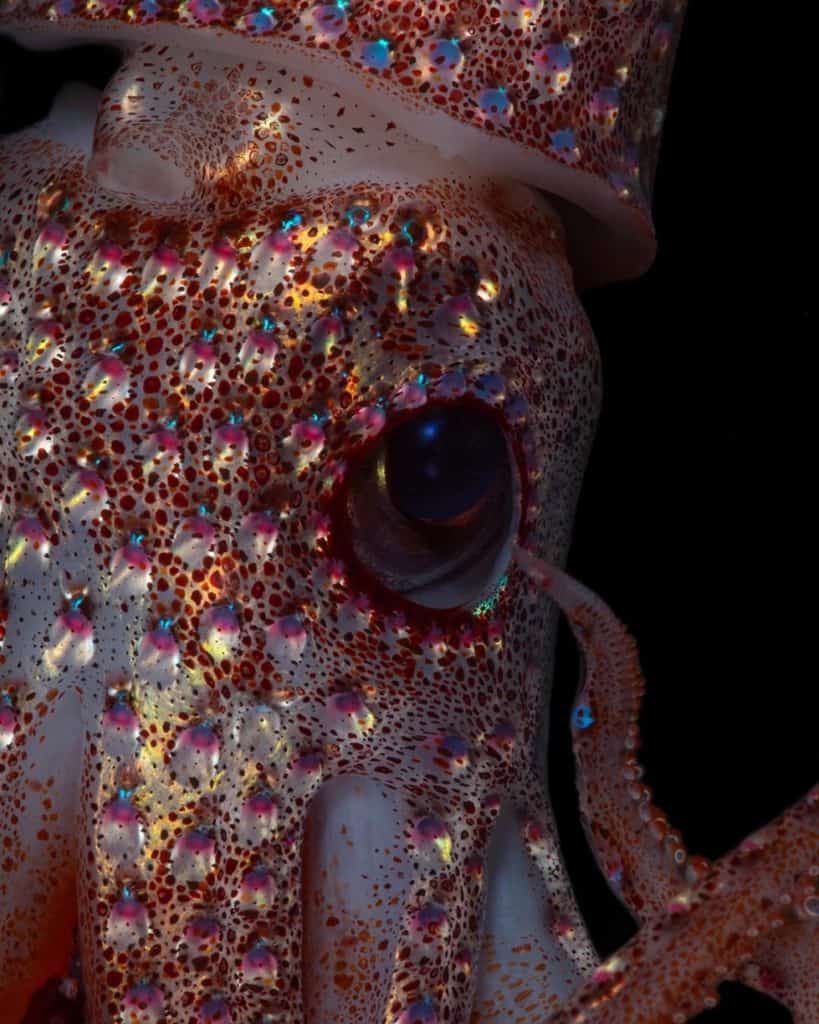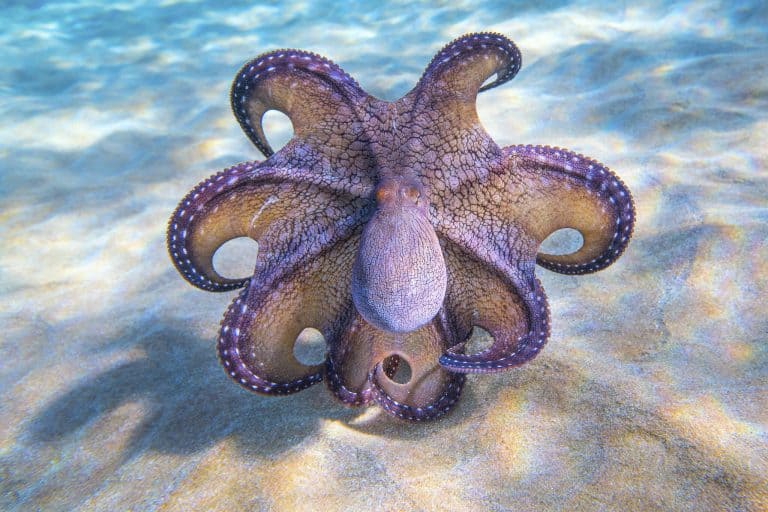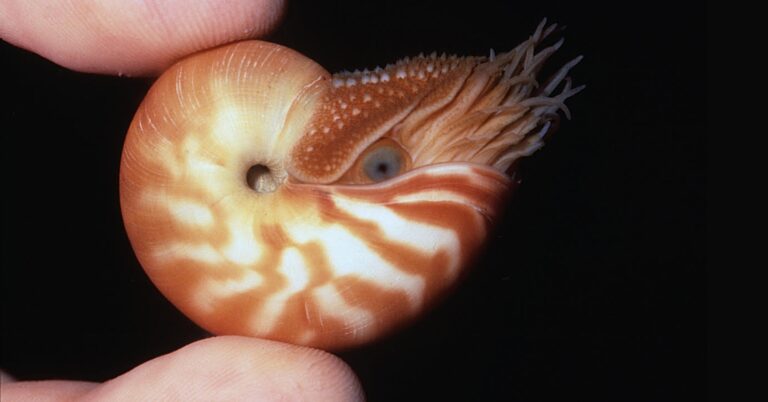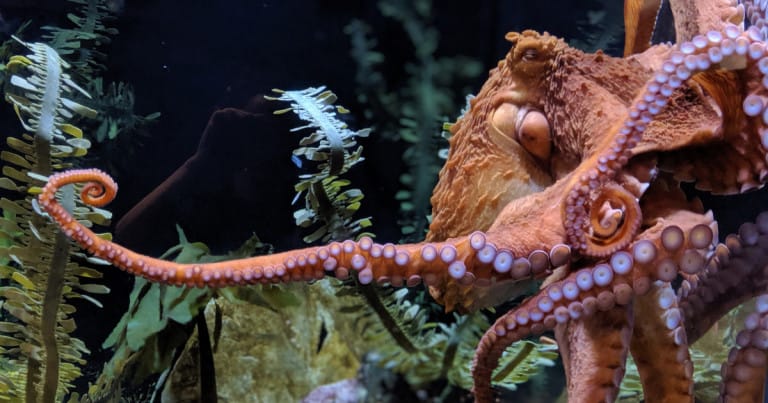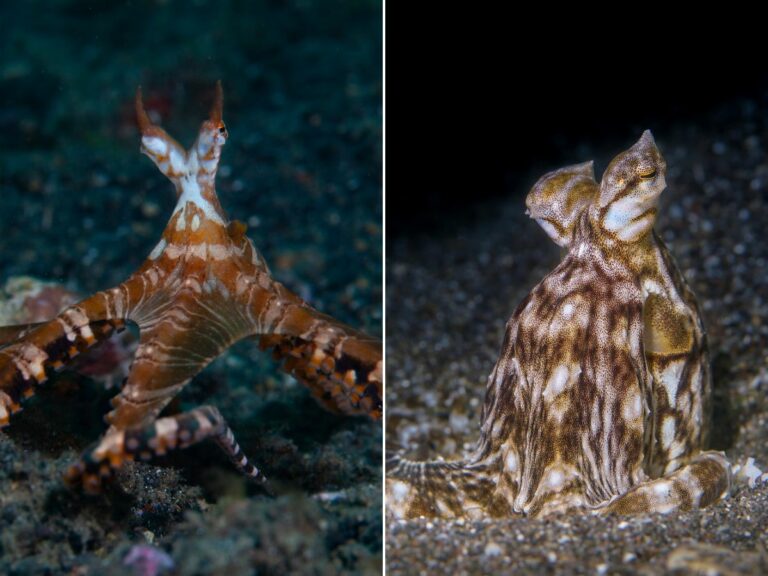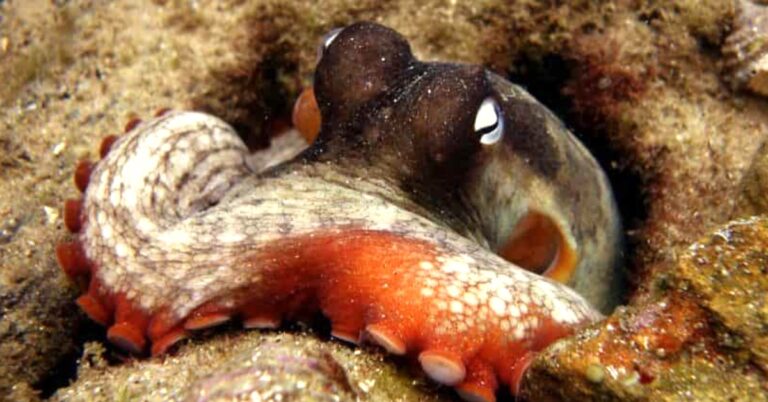Fun Facts About The Strawberry Squid
Lopsided eyeballs with unique colors. Lights that flash and pulse to lure in prey. An invisibility cloak to move around the ocean undetected by predators. These are just a few of many wondrous delights exhibited by the fanciest looking squid in the ocean, the Strawberry Squid.
If you’re just now learning about this bedazzled beauty, you’ve come to the right place!
The Strawberry Squid, scientifically known as Histioteuthis heteropsis, comes by its name with a bright red body dotted by tiny luminescent photophores.
Frankly, it looks less like a piece of fruit and more like a squid that just swam straight out of the 80s after going overboard with a bedazzler! The squid’s skin is covered in small photophores that glint like jewels.
History Behind The Discovery Of The Strawberry Squid
This fascinating cephalopod was first discovered by U.S. land-dwellers in the late 1800s and can be found in the tropical and subtropical waters of the Atlantic and Pacific Ocean.
Their preferred hangout spot is in the mesopelagic zone, also known as the twilight zone, between 200-1,000 meters (~650-3300 feet) below the surface.
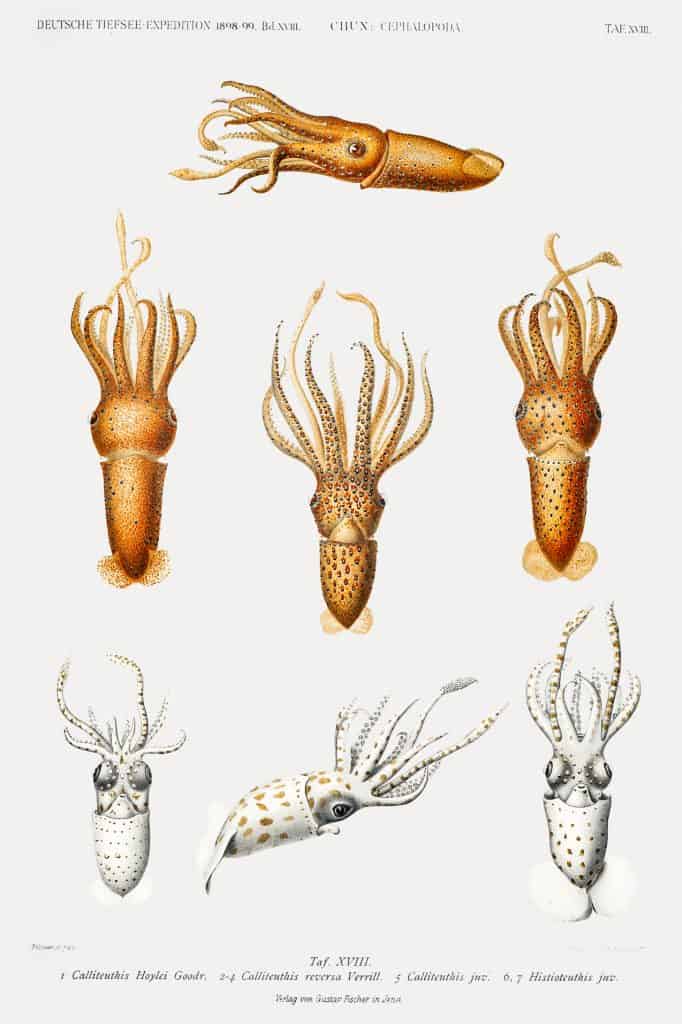
Fun Facts About The Strawberry Squid!
Many of you asked us questions about the Strawberry Squid on Facebook and Instagram post, so we wanted to share some more fun facts about this beautifully red squid!
It’s How Big?
The Strawberry Squid is about the size of a football, with the largest mantle recorded at 29 cm (~11.5 inches). This puts the Strawberry Squid on the smaller end of the squid size spectrum, considering that the giant squid could be the size of a school bus.
On The Move!
Did you know that Strawberry Squid participates in the largest migration on the planet? It is called the diel vertical migration (DVM) and occurs every day when trillions of marine animals move between the surface and depths of the ocean around the same time.
A study done by Clyde Roper and Richard Young found that Strawberry Squid spends their days between 500-700 meters (1650 – 2,300 feet) but are found in shallower depths between 300-400 meters (900 – 1,300 feet) during the night.
Along with the zooplankton, comb jellies, and dragonfish, the Strawberry Squid spends its day hiding from predators in the dark ocean depths and comes closer to the surface at night, feeling safer under cover of darkness, to feed on fish, crustaceans, and smaller squid.
Little Glowing Orbs Of Light
Photophores are light-emitting organs commonly found on animals that live in the depths of our oceans. These tiny glowing spots cover the Strawberry Squid’s body and are particularly important in allowing them to:
- Communicate with one another
- Attract a mate
- Lure in prey
- Hide from predators
Photophores are roughly spherical but not all are created equally. They can range from a simple organ made up of photogenic cells to complex organs equipped with lenses, shutters, color filters and reflectors.
Photophores radiate light within the body tissue giving the Strawberry Squid the power to glow up like a night light! This ability to produce your own light is called bioluminescence.
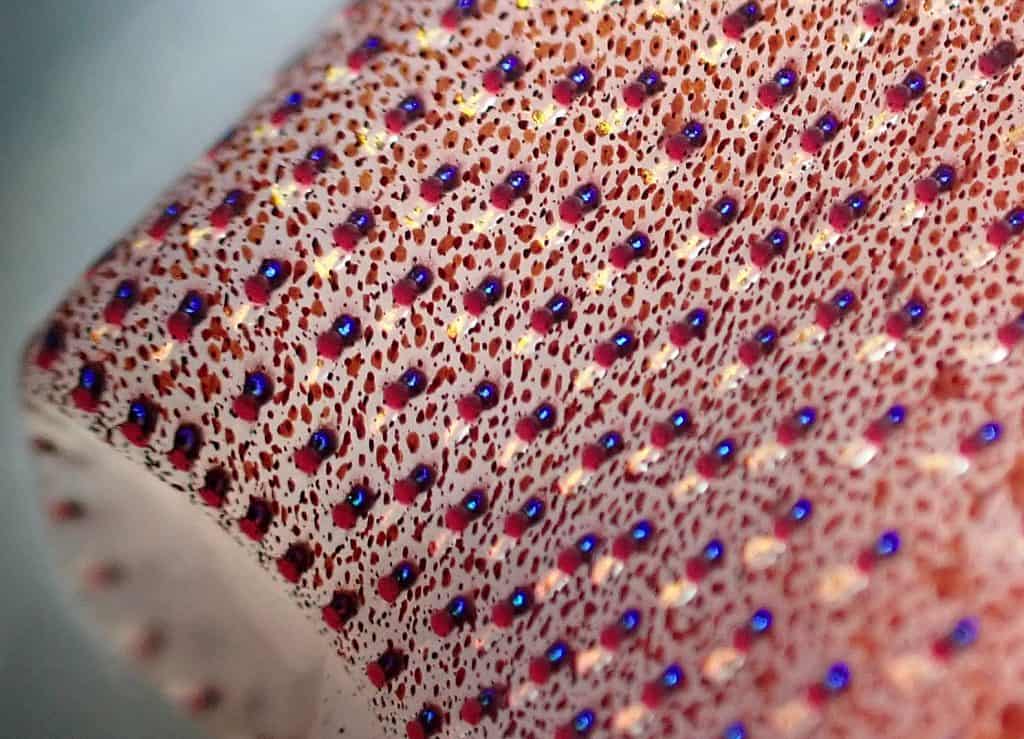
Stealth Mode Activation
While it’s nice to “chat” with fellow Strawberry Squid, their photophores play a key role in keeping them safe.
Being a squishy creature in an ocean full of animals with sharp teeth means you must get creative to avoid being someone’s meal.
The Strawberry Squid has two ingenious ways of disappearing from their predator’s sight and activating some serious stealth mode capabilities. To do this, they can use:
- Ink
- Photophores
If you are thinking, “Wow- photophores are so versatile.”, you are not wrong!
Counter Illumination
Strawberry Squids can avoid detection through counter illumination, where they put those photophores to work to match the color of the water above them. This helps minimize the contrast of their dark bodies against a lighter surface effectively making them invisible to any creatures lurking below who are looking for a tasty squid snack.
Using counter illumination not only keeps them safe from predators but also allows them to sneak up on their prey who don’t know what’s coming till it’s too late.
Inking Predators
Most cephalopods have an ink sac with the ability to spray ink into a predator’s face. This move enables them to make a quick getaway.
A study looking at deep-sea squid ink release noticed there are six types of ink release:
- Pseudomorphs
- Pseudomorphs series
- Ink ropes
- Clouds/smokescreens
- Diffuse puffs
- Mantle fills with multiple ink types being released by individual squid
The Strawberry Squid produces an ink cloud called a pseudomorph. It’s a dense blob, big enough to cover their body. Interestingly, this study found that they do not always use their jet propulsion to make a quick escape after inking.
In some instances, Strawberry Squid stay put, floating in the dark mess they created and waiting for the predator to leave.
Strawberry Squids And Their Wonky Eyeballs
Scientists have nicknamed this species the cockeyed squid because of the wonky-sized eyeballs they exhibit as adult squid. Their left eye can measure more than TWICE the diameter of the right eye!
Strawberry Squids are born with the same size eyeballs, but as they mature, their left eye has a massive growth spurt.
Why would one eye be so much bigger than the other on a relatively small squid head?
It’s an adaptation to the different light levels that the Strawberry Squid encounters moving within the twilight zone.
Their bulbous left eye evolved to inspect the shallower, dimmer waters closer to the surface and pick out shadows of creatures floating above. The left eye is even angled to look upwards while their regular-sized right eye is oriented downwards. It does this to pick out bioluminescent flashes in the inky watery abyss below.
Different Colored Eyes?
In addition to that, the eyes are different colors! The small right eye is blue while the left bulging eye has a yellow lens. This allows them to see polarized light which helps break up other animal’s counter illumination.
The yellow aids in the absorption of blue light, making colors like green or yellow stand out more. This makes the prey they hunt much more visible against the blue backdrop of the ocean. Any animal that does not perfectly match the color blue, including transparent creatures, will be seen by a strawberry squid’s one giant yellow eye.
The Strawberry Squid may not be a perfectly symmetrical being, but it makes up for it with this truly inspired visual adaptation!
The Strawberry Squid- A Magnificent Sea Creature
In summary, the Strawberry Squid is exceptionally well adapted to its deep-sea habitat while also looking like they’re wearing a hand jeweled gown– it isn’t any surprise why this species continues to go viral! We’re obsessed.
Did you enjoy learning more fun facts about the Strawberry Squid? Make sure you share this article with a friend!
If you want to educate yourself some more about all sorts of different cephalopods, take a look at our encyclopedia. Or, what we call it, our Octopedia!
Connect with other octopus lovers via the OctoNation Facebook group, OctopusFanClub.com! Make sure to follow us on Facebook and Instagram to keep up to date with the conservation, education, and ongoing research of cephalopods.
More Posts To Read:
If you enjoyed learning about The Strawberry Squid, we recommend taking a look at some of these other profiles:
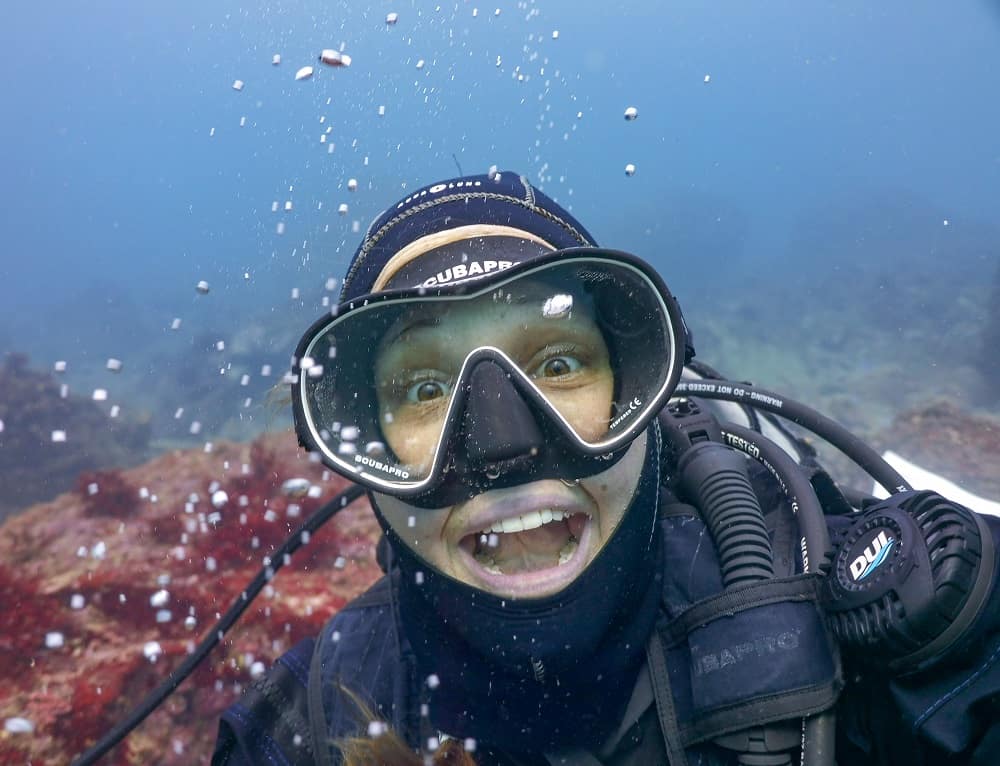
Corinne is a biologist with 10 years of experience in the fields of marine and wildlife biology. She has a Master’s degree in marine science from the University of Auckland and throughout her career has worked on multiple international marine conservation projects as an environmental consultant. She is an avid scuba diver, underwater photographer, and loves to share random facts about sea creatures with anyone who will listen. Based in Japan, Corinne currently works in medical research and scientific freelance writing!
